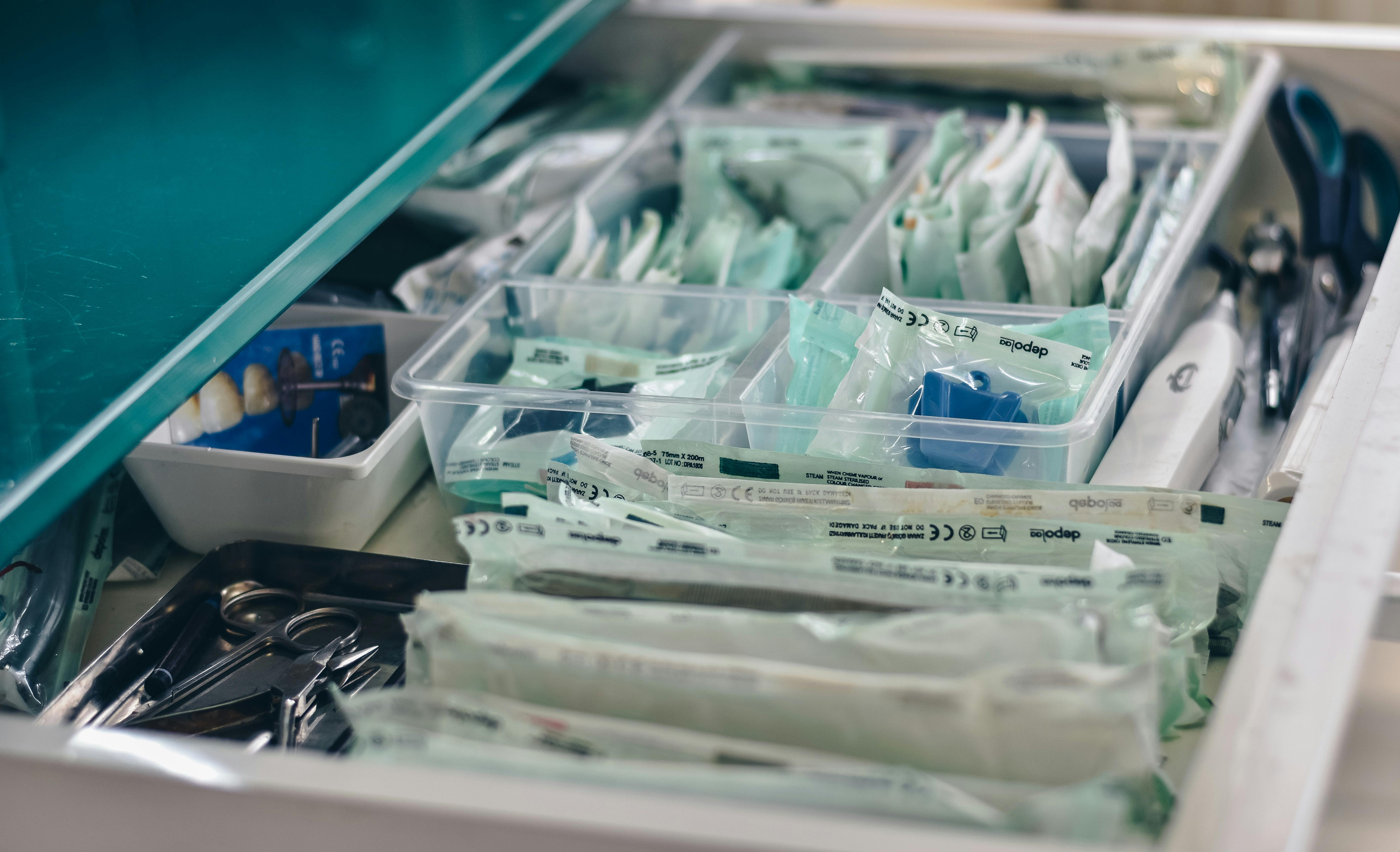Penoplasty is the most discreet of surgery. France is the leader of this discipline which consists of thickening and/or lengthening the penis. There are 2 techniques: medical (with hyaluronic acid) or surgery (with hyaluronic acid or lipofilling). But the technique and the planning of the injection is the same for both procedures. Some unscrupulous doctors engage in the procedure without experience or with prohibited products leading to serious complications for the patient. Until now no procedure was really standardized. This is Dr. Barbara Hersant’s goal, to standardize the techniques. And one of the ways to achieve this goal is through providing training opportunities.
INVIVOX: How many penoplasties do you do per month?
Dr Barbara HERSANT: I started this technique 6 years ago. I guess I've taken time to find the standardized technical. The techniques we used 3 years ago are already obsolete because nowadays new tools are available. This surgery is very confidential but it is increasing in the last 10 years. The frequency based on my own experience for medical penoplasty with hyaluronic acid is one by week and for surgical penoplasty it’s around 2 or 3 by month. If you speak about sheath of penis in surgical penoplasty, the inventor of the technique is French, Dr Abécassis. The complex penile surgery with a cavernous body of penis surgery arrived later.
INVIVOX: Why did you decide to set up this training?
Dr B. H.: It’s a niche practice and I wanted to make it more popular. It is a confidential procedure that is often practiced by people who are not competent in the field. There aren’t even that many scientific publications on the topic. I have spent many years trying to get sessions specially dedicated to this topic during congresses. This technique must be done by competent doctors in accordance with the rules of good practice. This area is a very complex area to treat. There are also issue postoperative complications that can arrive during the recovery period. It's a delicate surgery with a lot of risks hence the importance of a good training. 30% of patients who consult me for this surgery, are coming to me because they have had a complication with their first operation. I’m ready to show a medical technique with hyaluronic acid to aesthetic doctors or surgeons. I present some very interested products authorized in penis: a lot of doctors inject some forbidden products because the procedure is not profitable, you have to put a lot of product. In this case, there are a lot of complications with psychological disorders afterwards.
INVIVOX: Has there been an increase in the demand for this type of male intimate surgery? If so why?
Dr B. H.: There are 2 categories: young men who start their sex life and who suffer from a “locker room syndrome”. I never treat minors. The second category is made up of men over 50 years old often after difficulties in the couple or divorce. Women sometimes remark that they are lacking sensation from their husbands in terms of their sex life. In some cases they are suffering from vaginal hollowness. These men expect a lot of the procedure.
INVIVOX: What are the pathologies / malformations that cause the problem?
Dr B. H.: After a prostatectomy with shortening of penis, obesity can also cause a burying of penis, Lapeyronie’s diseases involving retraction and shortening of penis, partial amputation related to cancer, infection, priapism, chronic inflammation (Verneuil’s disease etc.) and of course the “locker room syndrome” which is the most frequent reason for consultation.
INVIVOX: Are there any contraindications?
Dr B. H.: Some body dysmorphic disorders. These men have some requests that can not be met. I have even encountered men who say that they have been left unemployed because of the size of their sex. It’s around 10 or 15% of men in consultation. Obesity is a relative contraindication especially morbid obesity because it is difficult to get satisfactory results. I prefer that men lose weight before the procedures. I advise also to stop tobacco before operation.
INVIVOX: What are the different techniques?
Dr B. H.: The enlargement surgical penoplasty (by lipofilling) is now standardized to obtain consistent results because the penis is a very bad transplant site. We need to use a quality graft and a microfilling really standardized (every transplant needs to be the same size). I improved my practice using closed circuit kits. The Coleman technique (20 years old) is completely outdated when we compare it to the standardized procedure of microfilling. To work on the head of the penis using nanofat (technique of injection of graft’s stem cell) is an interesting topic and quite popular. We have been using this technique for the past since 6 months at the hospital. It’s very useful for premature ejaculation and for head of penis wrinkles. For lengthening penoplasty, I have worked on my technique of V-Y plasty and severed the suspensory ligament. In many medical writings it is advised to use a small autologous fat transplant but it wasn’t satisfactory. So I had to go to meet surgeons of different countries who already had experience to improve my technique: I introduced a pediatric testicular prosthesis so that after cutting the suspensory ligament to avoid his retraction. It makes it possible to have no postoperative problem and no retraction. Including myself, there are only a handful of surgeons that use this technique. For the scrotum lifting I developed a vertical technique that I published. Unlike previous techniques that were horizontal that went again the tension lines that can lead to pain of the scrotum and erect retraction. This technique of elliptical resection centered on median raphe in vertical developed in our department allows to accompany the tissues when penis is erect. We guarantee the functionality of the penis without any problems. Our target is to standardize these techniques.
INVIVOX: What are the main steps of the operation?
Dr B. H.: When we do thickening and lengthening, I propose firstly to do the technique of lengthening with V-Y at the level pubo-pénile with severed the suspensory ligament and set up of pediatric testicular prosthesis. I also carry out gesture in scrotal skin (palmure scrotale) or scrotum at the same time if needed and I finish always with penoplasty of thickening by lipofilling.
INVIVOX: Can you tell us more about the V-Y plasty?
Dr B. H.: The V is a good surgical approach on the pubis and to go to the junction between pubis and penis in order to expose the suspensory ligament which is actually quite deep and which is tense between vertical symphysis pubis and cavernous body of the penis. It allows us to easily tackle this ligament and cut it safely by protecting the penis nerve. We cut along the symphysis pubis to avoid nerve damages. It allows us to do the elongation and finally to finish by closing in Y to further gain elongation on the skin.
INVIVOX: Why is anatomy so important for this?
Dr B. H.: We need to know anatomy because if we inject in cavernous body of the penis there is a risk of embolism with necrosis of penis. We need to know the map of penis sheath between albuginea and skin, to know different fascias. When we are disciplined we are able to inject in lateral between buck’s fascia and albuginea. It gives a very good cosmetic results. We need also to know the head of penis anatomy because there is spongy body under mucosa which are very vascular. We can’t inject in the middle of spongy body because of the necrosis risk. We need to know localization of neurovascular pedicle at 12 o’clock on the penis dorsal because there is risk of hyposensitivity of penis, the urethra localization to avoid urethra fistula. This organ is complicated.
INVIVOX: Will you share your tips and tricks, if so, can you share one with us?
Dr B. H.: For example, in my postoperative management, I use a shaping bandage, massage, the penis position because the consolidation is done in a week. Sometimes some touch-ups are necessary.
INVIVOX: Do you discuss the management of complications?
Dr B. H.: The main complication is migration or mass accumulation of fat or hyaluronic acid. So we learn to massage, to position the penis etc. The penis retraction is also a complication, in this case I prescribe some elongators
INVIVOX: Which audience do you address? Plastic surgeon, gynecologists?
Dr B. H.: The course can be for urologists, dermatologists, aesthetic doctors, beginners or someone who have already an experience but who want to improve it.
INVIVOX: What’s your training organization?
Dr B. H.: I’m going to show a surgical penoplasty in operating room and after in my office with a medical penoplasty during a consultation. I can also propose one reconstructive surgery and one aesthetic penoplasty on half a day.
INVIVOX: What benefits will the participants get from this day?
Dr B. H.: To control the patient’s selection, to know the good tools needed for practice based on my own experience (cannula, prosthesis, lipofilling kit, injection pencil), to apply the nanofat technique, and the postoperative management
INVIVOX: What will trainees be able to do concretely out of your training?
Dr B. H.: A beginner will be initiated and I recommend to complete his training with a cadaver workshop before to practice. Confirmed doctors can immediately set up tips and tricks to improve their practice.
"It is more than a training, it’s about giving a aetwork of practitioners the same technique, the same good practices to restore nobility to these procedures still too confidential and opaque."

